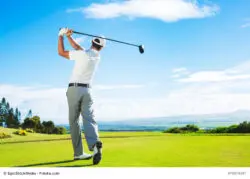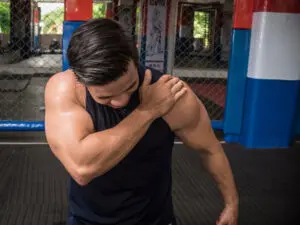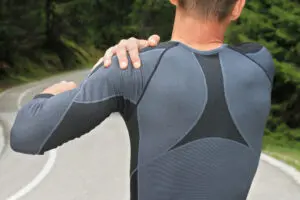It’s that time of year again when the weather is getting clear, temperature is warming up and golfers are heading back out to the course. However, golfers are prone to many shoulder injuries due to the nature of the sport.

Common leading shoulder position injury
AC Joint Pain – The AC joint is the acromioclavicular joint. It is the joint where the collarbone (clavicle) connects to the shoulder blade (scapula). This position clenches the AC joint towards the chest.
Common non-leading shoulder position injury
SLAP Tear (Superior Labrum Anterior and Posterior) – This is when the top (superior) part of the labrum is injured. It’s where the bicep tendon connects to the labrum. This tears occurs both in the front (anterior) and back (posterior) of where the the bicep tendon is attached. This is because the bicep is stretched out from the body in this position.
Shoulder injuries for both shoulders
Shoulder Impingement – Shoulder impingement occurs when bone spurs rub on the rotator cuff. When the arm is in the overhead position this narrows the space available for the rotator cuff and can cause pain.
Rotator Cuff Tears – One of the most common shoulder injuries, the rotator cuff usually gets torn slowly overtime. Although it can tear from one sudden event, the gradual degeneration is the most common. So this happens to frequent golfers.
Shoulder Instability – Shoulder instability can occur after a traumatic injury, or it can occur spontaneously in some patients who are loose jointed. The shoulder can completely dislocate and become stuck, requiring relocation, or it can partially dislocate (a subluxation). The leading shoulder usually gets posterior instability while the non-leading shoulder usually gets anterior instability.
For more information on golf injuries, or you think you may have a shoulder condition caused from golf, or any other sport, please call Dr. Koo at (425) 823-4000 for a consultation.



